Please refer to this anwser first, and then you'll understand the following code I made:
import SwiftUI
import PlaygroundSupport
struct ContentView: View {
var body: some View {
// text used in mask
let text = Text("Text")
.font(.system(size: 80, weight: .black, design: .rounded))
.scaledToFit() // center text in view
// container
return ZStack {
// background color
Color.white.grayscale(0.3)
// text card
Gradient.diagonal(.yellow, .green) // my custom extension
.inverseMask(text) // ⭐️ inverse mask
// shadow for text
.shadow(color: Color.black.opacity(0.7), radius: 3, x: 3, y: 3)
.frame(width: 300, height: 200)
// highlight & shadow
.shadow(color: Color.white.opacity(0.9), radius: 18, x: -18, y: -18)
.shadow(color: Color.black.opacity(0.3), radius: 14, x: 14, y: 14)
}
}
}
PlaygroundPage.current.setLiveView(ContentView())
and the result is:

The key extension used in the above code is .inverseMask():
import SwiftUI
extension View {
// view.inverseMask(_:)
public func inverseMask<M: View>(_ mask: M) -> some View {
// exchange foreground and background
let inversed = mask
.foregroundColor(.black) // hide foreground
.background(Color.white) // let the background stand out
.compositingGroup() // ⭐️ composite all layers
.luminanceToAlpha() // ⭐️ turn luminance into alpha (opacity)
return self.mask(inversed)
}
}
----[Edited]-----
My custom extension for Gradient:
import SwiftUI
extension Gradient {
// general linear gradient ---------------------------
public static func linear(
from start: UnitPoint,
to end: UnitPoint,
colors : [Color] // use array
) -> LinearGradient
{
LinearGradient(
gradient : Gradient(colors: colors),
startPoint: start,
endPoint : end
)
}
public static func linear(
from start: UnitPoint,
to end: UnitPoint,
colors : Color... // use variadic parameter
) -> LinearGradient
{
linear(from: start, to: end, colors: colors)
}
// specialized linear gradients ------------------------
// top to bottom
public static func vertical(_ colors: Color...) -> LinearGradient {
linear(from: .top, to: .bottom, colors: colors)
}
// leading to trailing
public static func horizontal(_ colors: Color...) -> LinearGradient {
linear(from: .leading, to: .trailing, colors: colors)
}
// top leading to bottom trailing
public static func diagonal(_ colors: Color...) -> LinearGradient {
linear(from: .topLeading, to: .bottomTrailing, colors: colors)
}
// top leading to bottom trailing
public static func diagonal2(_ colors: Color...) -> LinearGradient {
linear(from: .bottomLeading, to: .topTrailing, colors: colors)
}
}

